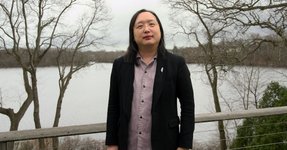Sublime
An inspiration engine for ideas
Inside Audrey Tang’s Plan to Align Technology with Democracy
time.com
The process involved many steps (proposal, opinion expression, reflection, and legislation) each harnessing a range of open source software tools, but has become best known for its use of the at-the-time(2015)-novel machine learning based open-source “wikisurvey”/social media tool Polis,
Audrey Tang • ⿻ 數位 Plurality: The Future of Collaborative Technology and Democracy
collaborate with the public to fund and refine new products and projects. This model of collaboration invites input and support from a broad audience, validating ideas and ensuring they meet the needs and desires of potential users.
Audrey Tang • ⿻ 數位 Plurality: The Future of Collaborative Technology and Democracy
public interest software.
Audrey Tang • ⿻ 數位 Plurality: The Future of Collaborative Technology and Democracy

Polis is a prominent example of what leading ⿻ technologists Aviv Ovadya and Luke Thorburn call "collective response systems" and "bridging systems" and others call "wikisurveys".
Audrey Tang • ⿻ 數位 Plurality: The Future of Collaborative Technology and Democracy
vTaiwan is constantly experimenting with new deliberation and voting tools, integrating LLMs for summarization.
Audrey Tang • ⿻ 數位 Plurality: The Future of Collaborative Technology and Democracy
gone beyond symbolic support to awarding real funding to valued projects (such as around agricultural and food safety inspections) using an extension of Quadratic Voting to Funding
Audrey Tang • ⿻ 數位 Plurality: The Future of Collaborative Technology and Democracy
the open-source mantra "so fix it!"